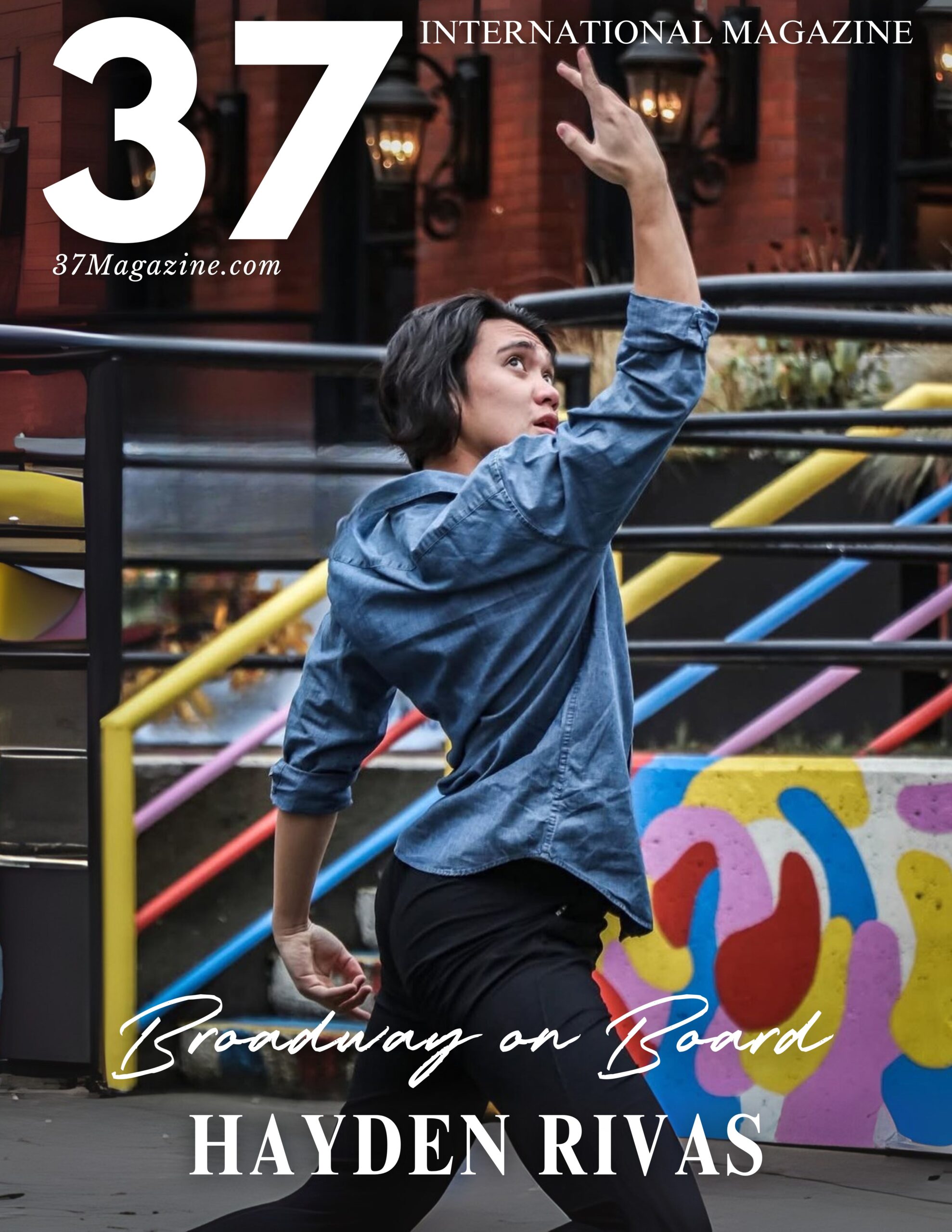
Hayden Rivas is no stranger to the stage—but his latest role in Beetlejuice aboard Norwegian Cruise Lines has taken his artistry to entirely new territory. From surviving an intense four-day audition to performing Broadway-caliber choreography on a constantly moving ship, Hayden shares the reality of what it takes to bring theater to life at sea. In this exclusive, he reflects on the highs, the challenges, and how the experience has redefined both his craft and his capacity.
The audition process for Beetlejuice on Norwegian Cruise Lines was more intense than anything Hayden has experienced before – and that includes auditions for Broadway shows and national tours. “I walked in thinking I knew what to expect from a cruise ship audition, but this completely shattered any preconceived notions I had about the caliber and rigor of shipboard productions.”
Standing Out In A Sea Of Talent
What was the auditioning process like for such a Broadway-scale production on a cruise ship. How did it all unfold?
The process spanned four days, which immediately signaled that this wasn’t going to be your typical cruise ship gig. We had multiple dance calls that tested everything, the iconic Beetlejuice choreography is incredibly demanding, and they needed to know we could handle the full Broadway staging. I remember sweating through combination after combination, learning Connor Gallagher’s original Broadway choreography as staged by Michael Fatica. There’s no watering down for the ship. It’s the exact same movement vocabulary that audiences see on Broadway, which means the technical demands are just as high.
The singing portion was equally challenging. I had to prepare my 32-bar cut of pop/rock songs, which needed to demonstrate not just vocal ability but the specific style and energy that Beetlejuice requires. This isn’t a show where you can hide behind pretty ensemble lines – you need power, character choices, and the ability to sell comedy and darkness simultaneously.
What made auditioning for Beetlejuice with Norwegian Cruise Line different from other auditions you’ve experienced?
What made the process even more unique was the dual approval system. You’re not just convincing one creative team that you’re right for the role – you need approval from both Norwegian Cruise Lines and the actual Beetlejuice creative team. That added this extra layer of pressure because you’re essentially auditioning for Broadway-level creatives while also proving you can handle the unique demands of shipboard life and performance.
The most exciting part was learning that our production would be directed by Catie Davis, who was the associate director on the Broadway production. Having that direct connection to the original Broadway team meant we weren’t getting a cruise ship approximation of Beetlejuice – we were getting the real thing, adapted for our space but maintaining the integrity and artistry of the original.
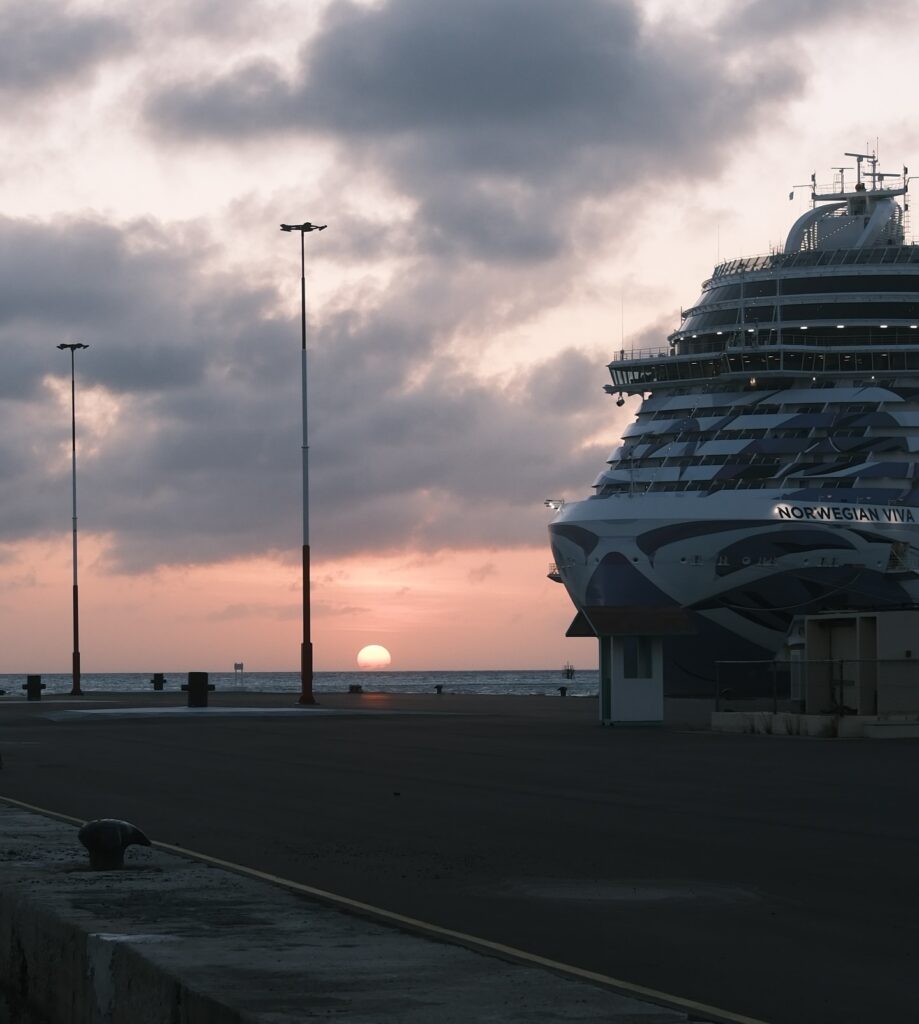
How did you stay mentally and physically prepared during the gap between your audition and the start of rehearsals?
The timeline of this whole journey has been wild. I first auditioned for this production in March of 2023, and I didn’t officially start rehearsals until January of 2025. That extended timeline taught me so much about patience and maintaining readiness even when you have no idea when – or if – the opportunity will materialize.
During those two years, I kept training, kept auditioning for other projects, kept growing as an artist. But there was always this possibility hanging in the background. When the call finally came that we were moving forward, it felt like this incredible validation of persistence and faith in the process.
What struck me most about the audition experience was how it challenged every assumption I had about cruise ship entertainment. The creative standards, the performance expectations, the technical requirements – everything was at a high caliber. It made me realize that the entertainment industry is evolving, and cruise lines are investing in legitimate theatrical experiences that rival land-based productions.
Looking back, that audition process prepared me perfectly for what this contract would actually entail. The rigor, the attention to detail, the expectation of Broadway-level performance – it all translated directly to what we’re doing on the ship now. They weren’t just casting performers; they were casting artists who could maintain the integrity of a Tony-nominated musical while navigating the unique challenges of performing at sea.
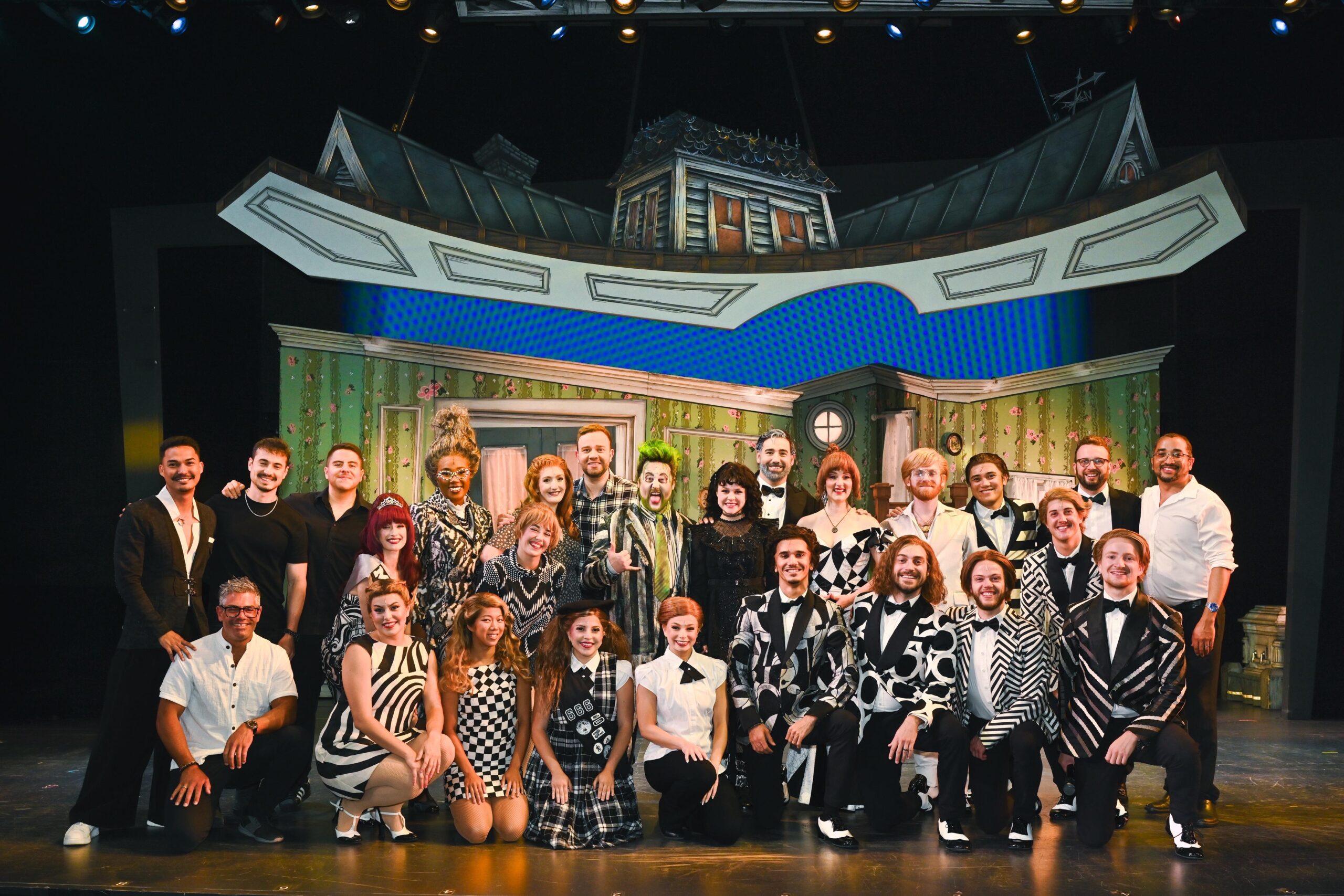
Walk us through your first day on board. What surprised you most?
I’ll be completely honest—the first week on the ship is brutal. This is my first ship contract, and as much as they try to warn you about what to expect, nothing really prepares you for the intensity of those initial days. The exhaustion hits you in waves, and you quickly realize this isn’t going to be anything like land-based rehearsal processes.
We left our hotel in San Juan at 6 AM, which already felt early, but that was just the beginning. By 6:30 AM, we were boarding the ship and immediately thrown into what they call “installing” the show – basically teching Beetlejuice with the new cast in a completely unfamiliar space. But before we could even touch the choreography, we had to navigate new worker orientations and mandatory safety trainings that are non-negotiable when you’re working on a vessel on the open water.
What surprised me most was the relentless schedule. From 6:30 AM orientation until 11 AM, then a quick lunch break until 12:30 PM, rehearsals until 4 PM, more trainings until 8 PM, and then back to rehearsals until 1 AM. I remember looking at the schedule thinking there had to be a mistake – 19-hour days? But that became our reality for the six days leading up to our first performance.
The physical and mental stamina required was unlike anything I’d experienced. On land, you might have long rehearsal days, but you go home, decompress, sleep in your own bed. On the ship, your entire world is contained within these walls. Your cabin is tiny, the hallways never stop moving slightly, and you’re constantly aware that you’re surrounded by ocean. There’s no stepping outside for fresh air or taking a walk around the block to clear your head.
What was the biggest adjustment you had to make when performing on a moving ship?
What caught me off guard was how quickly you have to adapt to performing in a space that’s constantly in motion. Even when the ship feels stable, there’s this subtle movement that affects your balance, your spatial awareness, everything. We’re doing the exact same Broadway choreography, but now we have to account for potential swells, the slight tilt of the stage, the way costumes hang differently when the ship rocks.
The technical install process was fascinating but overwhelming. We’re mounting a full Broadway production in a theater that’s literally sailing through the Caribbean (and soon to be across the Atlantic). The crew has to secure everything differently, the lighting plot has to account for the ship’s movement, and we as performers have to learn to trust the space in a completely new way.
Waves, Routines & Resilience
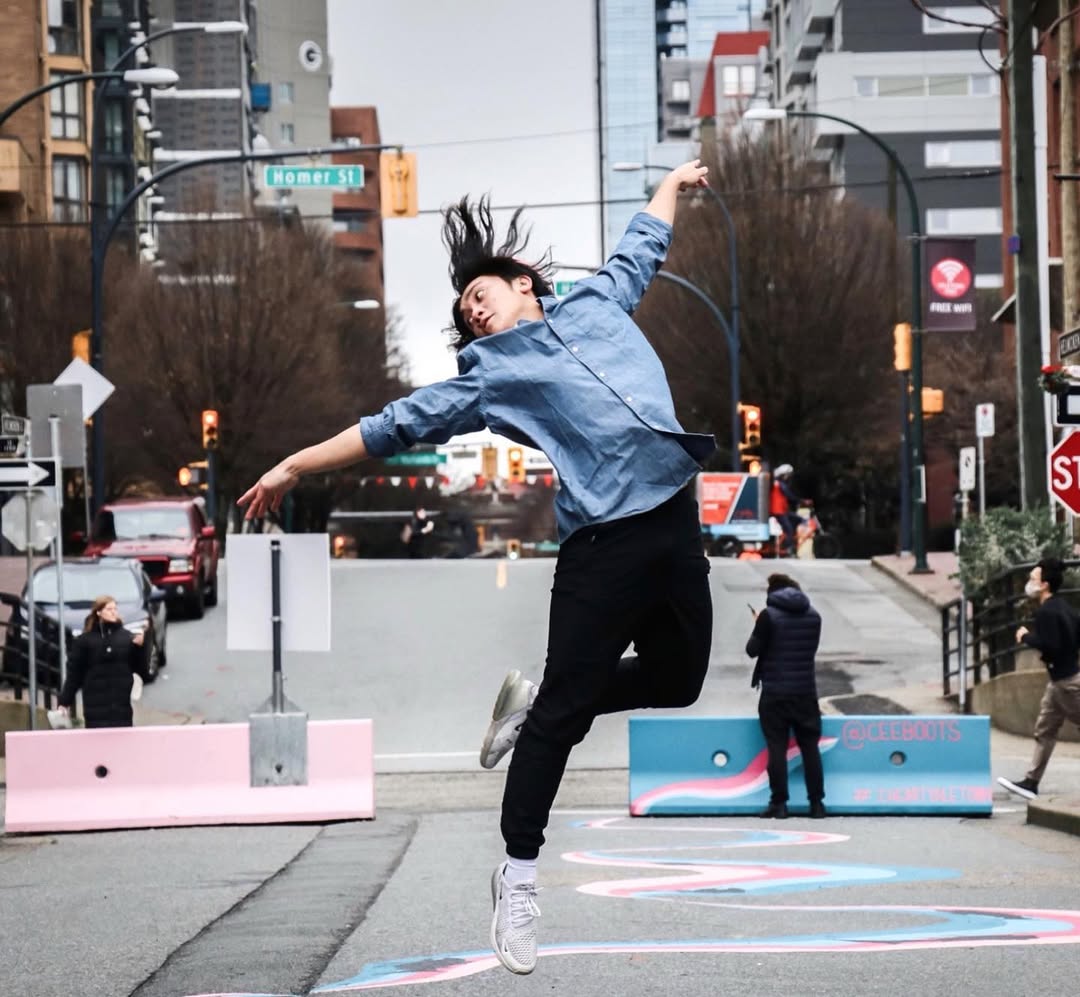
How did living and working so closely with your castmates shape your relationships?
What surprised me most was how quickly the cast bonded. When you’re sharing this intense, exhausting, slightly surreal experience with a group of people, you develop this camaraderie that’s deeper than typical show relationships. We’re not just colleagues – we’re essentially roommates, neighbors, and creative partners all at once.
By day six, when we finally performed for our first audience, I felt like I’d been on the ship for months. The learning curve is so steep, and you’re absorbing so much information—not just about the show, but about ship life, safety protocols, how to navigate tiny spaces, how to maintain your sanity when you can’t escape your workplace.
Looking back, those first days were a masterclass in adaptation and resilience. You learn quickly that flexibility isn’t just helpful – it’s essential. Plans change based on weather, technical issues arise that you’d never encounter on land, and you have to be ready to roll with whatever the day brings. It’s exhausting, but there’s also something exhilarating about realizing you can handle way more than you thought possible.
Performing at sea comes with unique challenges. What’s the most unexpected thing you’ve had to adapt to?
The show schedule has been the biggest adjustment for me, and it’s completely different from anything I experienced in traditional theater. Unlike a standard eight-show week where you have time to pace yourself and recover between performances, our schedule is this intense burst that really tests your stamina in ways I never anticipated.
We start with a full tech run the evening before our performance days, which is essentially a complete dress rehearsal to make sure everything is working properly after potentially rough seas or technical adjustments. Then we go straight into back-to-back show days with a 6:30 PM performance followed by a 9:30 PM show. The turnaround time between shows is incredibly tight – you’re basically offstage, changing costumes, grabbing water and a quick dinner, and then right back into it.
What makes this even more challenging is that this abridged version of Beetlejuice has no intermission. We’re going full-out for the entire show, twice in one evening, with the same intensity and energy that Broadway audiences expect. There’s no moment to catch your breath, reset, or pace yourself differently. You must maintain that manic Beetlejuice energy from the opening number straight through to the finale, then do it all over again 30 minutes later.
How does performing on a cruise ship compare physically and mentally to performing in traditional theater?
The stamina required is unlike anything I’ve done before. In traditional theater, even with an eight-show week, you have days off to recover, you can go home and decompress, you can control your environment between shows. On the ship, you’re performing these marathon back to-back shows, then sleeping in a tiny cabin that’s moving with the ocean, trying to recover enough to potentially do it again the next port.
Your vocal stamina especially gets tested. Beetlejuice demands so much vocally – it’s rock influenced, high-energy, and often requires singing over big orchestrations. Doing that twice in one evening, while your body is also working harder to maintain balance on a moving ship, means you have to be incredibly strategic about vocal warm-ups, cool-downs, and conservation between shows.
The physical demands are intensified by the ship’s movement too. You’re already working harder just to maintain your balance and execute choreography cleanly, and then you have to sustain that extra effort across two full performances. Your core is constantly engaged in ways it wouldn’t be on land, and that additional physical work compounds the exhaustion.
The audience energy also changes throughout the evening, which adds another layer to navigate. The 6:30 crowd might be excited and ready to party after a day in port, while the 9:30 audience could be more tired or have different energy. You have to be able to adapt your performance slightly to meet each audience where they are, while maintaining the same technical and artistic standards.
How has the demanding schedule shaped you as a performer?
I think what surprised me most is how this schedule has actually made me a stronger performer overall. When you know you have to deliver at that level twice in one evening, you develop this mental and physical resilience that carries over into everything else you do. It’s taught me about true stamina – not just getting through one show, but maintaining excellence across multiple demanding performances in challenging conditions.
The compressed intensity of it all creates this unique adrenaline that’s almost addictive. Yes, it’s exhausting, but there’s also something exhilarating about knowing you can rise to that level of demand and deliver the show that audiences deserve, no matter how tired you are or how much the ship is rocking.
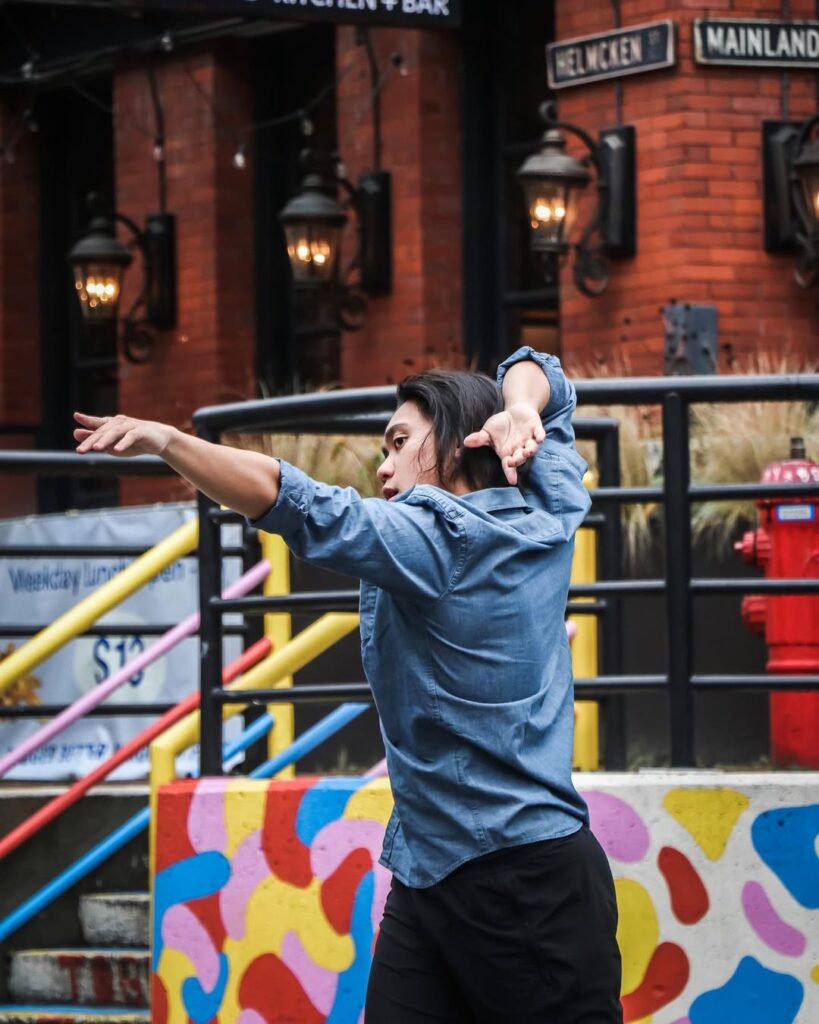
How do you prepare your body and mind for high-intensity shows in an environment that’s always moving?
Thankfully, because I’m constantly exploring the ports we dock in, my body is consistently in motion, which has been crucial for maintaining my physical conditioning. All that walking around new cities, hiking to viewpoints, and just wandering with my camera keeps me active in a way that feels natural rather than forced.
The hardest part for me is actually keeping up with my dance training in vocabularies outside of Beetlejuice. When you’re performing the same choreography every show, your body gets incredibly efficient at those specific movements, but you start to lose some of that versatility and range that comes from cross-training. It’s always challenging to get your body moving in different styles when you’re so deeply embedded in one show’s movement vocabulary.
I try my best to find moments to explore other dance forms, even in small ways. During a lot of the parties on the ship, you can usually find me freestyling and trying to get a dance party started. There’s something liberating about moving just for the joy of it, without choreography or staging to think about. Those moments remind me why I fell in love with dance in the first place – that pure expression and connection to music.
What strategies have you developed to stay mentally grounded in such a unique environment?
The mental preparation has become just as important as the physical. Living and working in the same space 24/7 can be mentally taxing, so I’ve learned to create these little rituals that help me shift into performance mode. Sometimes it’s taking a few minutes on deck before the show to watch the ocean and center myself, or putting on one of my playlists while doing wig prep.
The moving environment actually keeps me more present and aware during performances. You can’t zone out or go on autopilot when you need to constantly adjust to the ship’s movement. In a weird way, that constant micro-awareness has made me a more focused performer – I’m completely tuned in to my body, the space, and my fellow performers in ways that I might not be on a stationary stage.
What I’ve discovered is that the ship lifestyle requires this balance between maintaining your artistic edge and accepting that your training routine won’t look the same as it would on land. You have to be creative about finding moments to grow and challenge yourself outside of the show requirements, even if it’s just freestyling in the theatre or practicing different forms in the tiny rehearsal spaces during off hours.
What kind of camaraderie develops among cast members on a ship?
It’s been kind of amazing bonding with this incredibly diverse cast. We have cast members from the States, Ireland, Scotland, the UK, Australia, Italy, and of course Canada – and that international mix brings such a rich variety of perspectives and experiences to our little floating community. There’s something beautiful about sharing stories from completely different backgrounds while we’re all living this same unique adventure together.
Because we all live and work in the same place 24/7, we’ve grown incredibly close from the start. It’s like an accelerated friendship process – you skip past all the small talk and surface-level getting-to-know-you stuff because you’re literally sharing this intense, surreal experience every single day. When your entire world is contained within the same ship, your castmates become your neighbors, your coworkers, your adventure buddies, and your family all at once.
Most of the time when I’m exploring off the ship, I’m asking fellow cast members to come with me. There’s this natural instinct to share these incredible experiences we’re having. It becomes less about individual exploration and more about creating these shared memories that we’ll probably be talking about for years.
Anchored in Dance
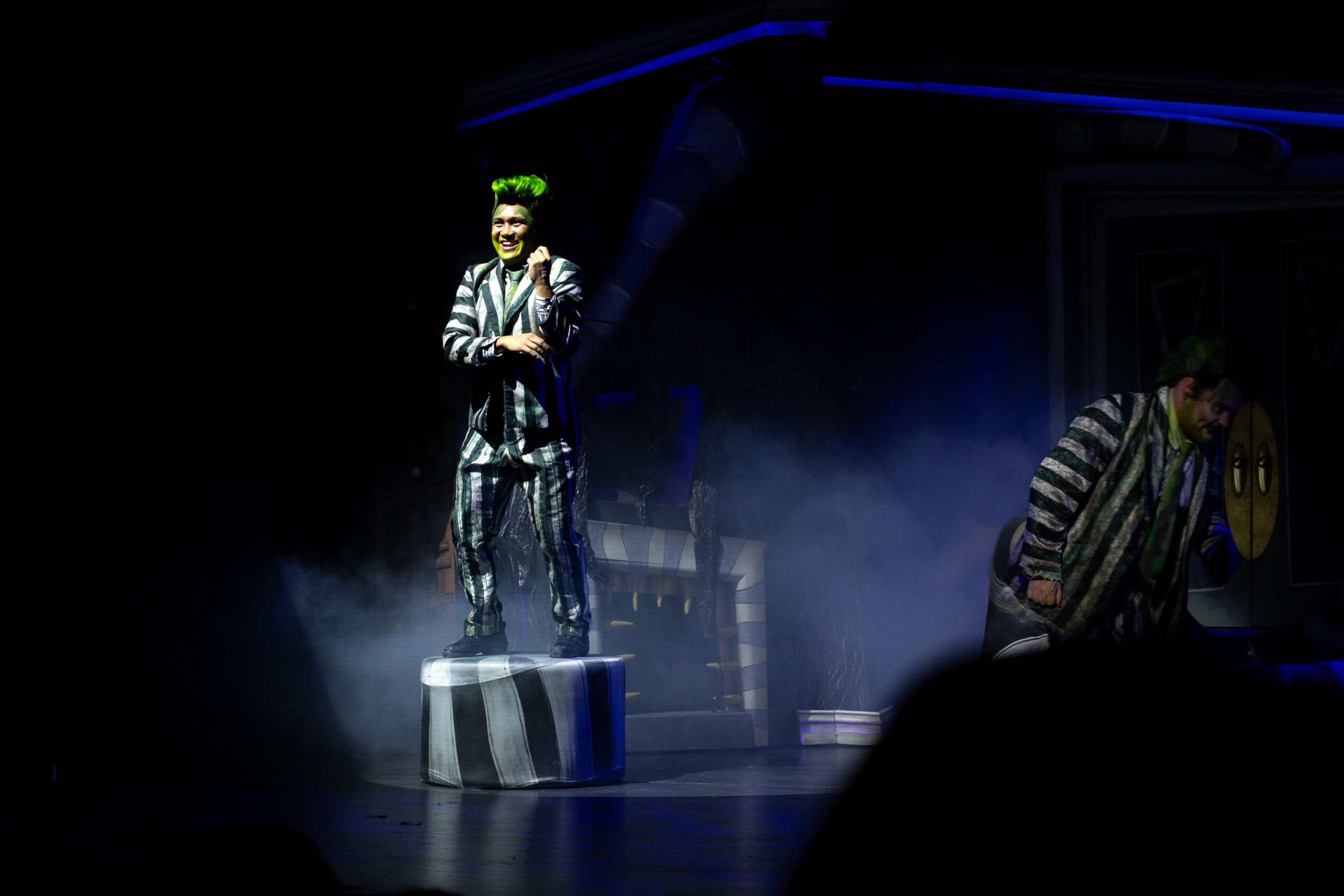
What’s it like building community with your castmates in such an intense, close-knit environment?
The bond that develops is unlike anything I’ve experienced in traditional theater. On land-based shows, you see each other for rehearsals and performances, but then everyone goes home to their own lives. Here, we’re living through everything together – rough seas, amazing sunsets, tiny cabin struggles, incredible port days, homesickness, the excitement of new countries. We celebrate each other’s birthdays in the crew bar, we comfort each other when someone’s having a tough day, we share clothes and snacks and stories from home.
What’s incredible is how quickly you learn to support each other professionally too. When someone’s feeling off vocally or physically, the whole cast rallies around them. We’ve developed this intuitive understanding of each other’s strengths and challenges, so we can adjust our energy or support system in real time during shows. If the ship is particularly rocky one night, we’re all subtly looking out for each other on stage, ready to help if someone needs it.
I’ve genuinely made lifelong friendships on this production. These are people who have seen me at my most exhausted, my most homesick, my most excited about a new port, my most proud after a great show. When you share that level of vulnerability and adventure with people, the bonds you form go way deeper than typical work relationships.
There’s also this unique understanding we all have about the sacrifices and rewards of this lifestyle. We all chose to leave our normal lives behind for this floating theater experience, so there’s this shared sense of adventure and commitment that brings us together. We’re all a little crazy for doing this, and that shared craziness creates its own kind of solidarity.
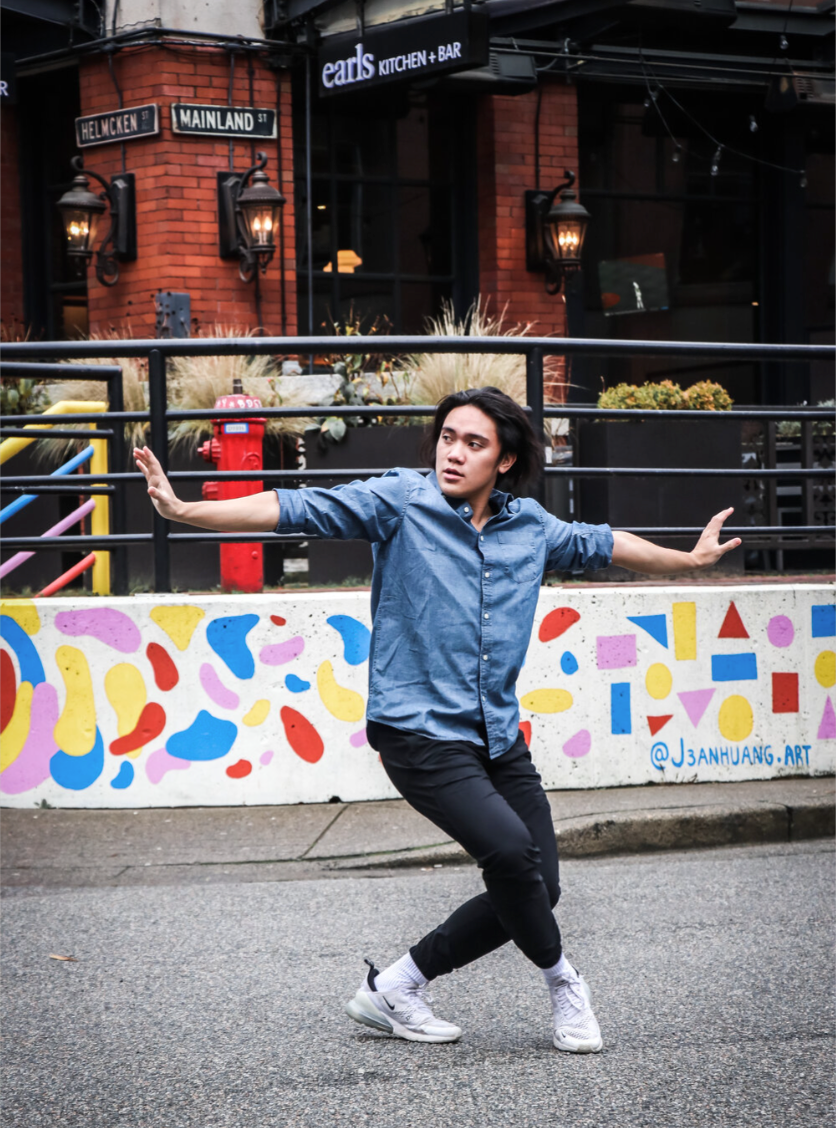
What keeps you inspired when you’re dancing the same number for months at sea?
Truthfully, it’s our job to keep the show fresh and exciting for the audience, and that responsibility becomes this incredible motivator. Yes, there are definitely days where shows feel impossible – maybe you’re exhausted from exploring a port all day, or dealing with rough seas, or just feeling the weight of performing the same material over and over. But because our cruise audiences change every 7-10 days, we absolutely must keep the energy up no matter what we’re personally going through.
That constant turnover of audiences is actually what saves me from falling into autopilot. Every week, we’re performing for people who have never seen Beetlejuice before, who might have saved up for this cruise as their big vacation, who are genuinely excited to experience live theater at sea. When I think about it that way – that this might be someone’s first or only time seeing this show – it puts the responsibility into perspective. Their experience doesn’t depend on whether this is my 4th or 45th performance; it depends on me bringing the same energy and commitment I had on opening night.
I’ve learned to find inspiration in the small variations that naturally occur. Maybe the ship is moving differently one night, which changes how certain moves feel. Maybe there’s a particularly enthusiastic audience that’s laughing at moments that usually get smaller reactions. Maybe a fellow cast member tries something slightly different in a scene, and suddenly I’m seeing the material from a new angle. These tiny shifts keep me present and engaged rather than just going through the motions.
How do you stay motivated and continue growing as a performer in a show with a consistent routine?
I’ve also started setting personal challenges for myself within the established choreography and staging. Maybe I’m working on making a particular gesture more specific or finding a new line read I’ve said hundreds of times. It’s like having these private acting and dance exercises happening within the larger performance, which keeps me growing as an artist even when the external structure stays the same.
But honestly, the biggest inspiration comes from remembering why I’m here in the first place. I’m getting paid to perform Broadway-caliber theater while traveling the world. Even on the hardest days, when I’m tired and the last thing I want to do is put on that costume again, I remind myself that this is an extraordinary opportunity that most performers never get. That gratitude, combined with the responsibility to our audience, usually snaps me back into the right mindset.
There’s also something powerful about being part of a show that brings joy to people’s vacations. When you see families in the audience, couples celebrating anniversaries, or friends having this shared experience together, it reminds you that what we’re doing matters beyond just the technical execution of choreography and songs. We’re creating memories for people, and that’s worth bringing your best to, every single time.
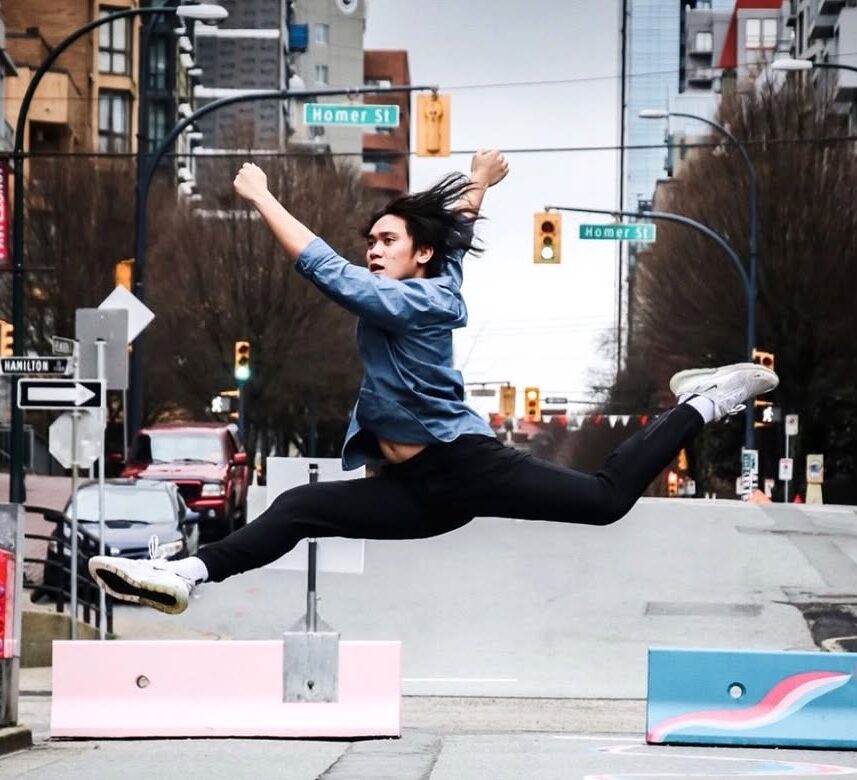
What are some of the places or your favorite spots you’ve been able to visit while being a part of the production?
One of my favorite things that me, my roommate, and some of my close friends have started on this contract is rating the ports we’ve been to – it’s become this ongoing competition and conversation that keeps us excited about each new destination. My current top ten are:
1. Livorno, Italy
2. Civitavecchia (Rome), Italy
3. Philipsburg, St. Martin
4. Santa Cruz, Tenerife
5. Barcelona, Spain
6. Istanbul, Turkey
7. Palma de Mallorca, Spain
8. Lisbon, Portugal
9. Alexandria, Egypt
10. Marseille, France
What makes this ranking system so interesting is that the timing of our ports varies dramatically, which completely affects how you experience each place. Some days we arrive at 7 AM and don’t leave until 11 PM, giving us almost a full day to explore. But other times we’re pulling out at 2 PM, which means you have to be incredibly strategic about what you want to see and do.
There are also ports like Istanbul that I’ll visit multiple times throughout the contract, so I can take a more relaxed approach and explore different neighborhoods on each visit. But then there are places like Livorno and Barcelona that I’ll only get to experience once, which creates this pressure to make every moment count.
For the ports I was super excited about, I’ve learned to go completely out of my way to maximize the experience. When we docked in Livorno, I visited Pisa at 7:45 AM to see the Leaning Tower at sunrise when there were hardly any tourists, then rushed to Florence for a 10 AM cooking class. It was this incredibly full day where I was determined to experience both the iconic sights and authentic local culture, even if it meant an exhausting schedule.
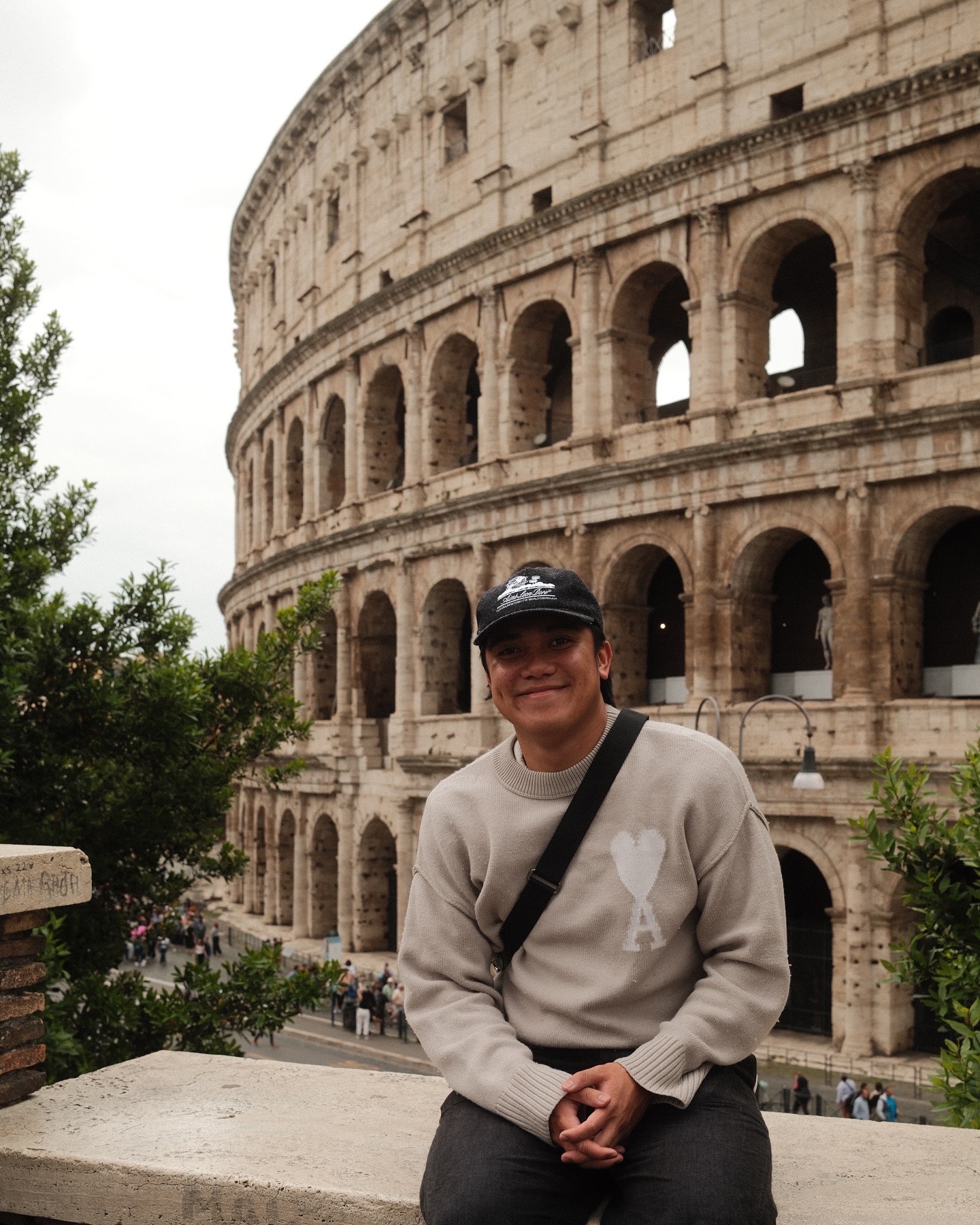
What are some of your favorite ways to experience new destinations while on tour?
What’s amazing about having my camera with me is that I’m documenting all these incredible experiences while also being present in them. Some of my favorite shots have come from those early morning explorations when the light is perfect and the tourist crowds haven’t arrived yet.
The diversity of these ports has been mind-blowing. Going from the vibrant Caribbean energy of St. Martin to the ancient history of Alexandria to the sophisticated food scene in Barcelona – each place offers something completely different. It’s like getting a crash course in world cultures while also performing Broadway theater every night.
My castmates and I have also developed these little traditions around our port visits. We’ll research local specialties ahead of time, find the best viewpoints for photos, or seek out experiences that are unique to each destination. The cooking class in Florence, hiking to viewpoints in Tenerife, exploring the mosques in Istanbul – these aren’t just tourist activities, they’re becoming the memories that will define this entire contract.
The rating system has also become this fun way to stay connected with my castmates and compare our experiences. We’ll debate whether the food in Barcelona beats the scenery in Tenerife, or whether the historical significance of Alexandria outweighs the natural beauty of St. Martin. It keeps us engaged and excited about each new destination rather than just going through the motions of another port day.
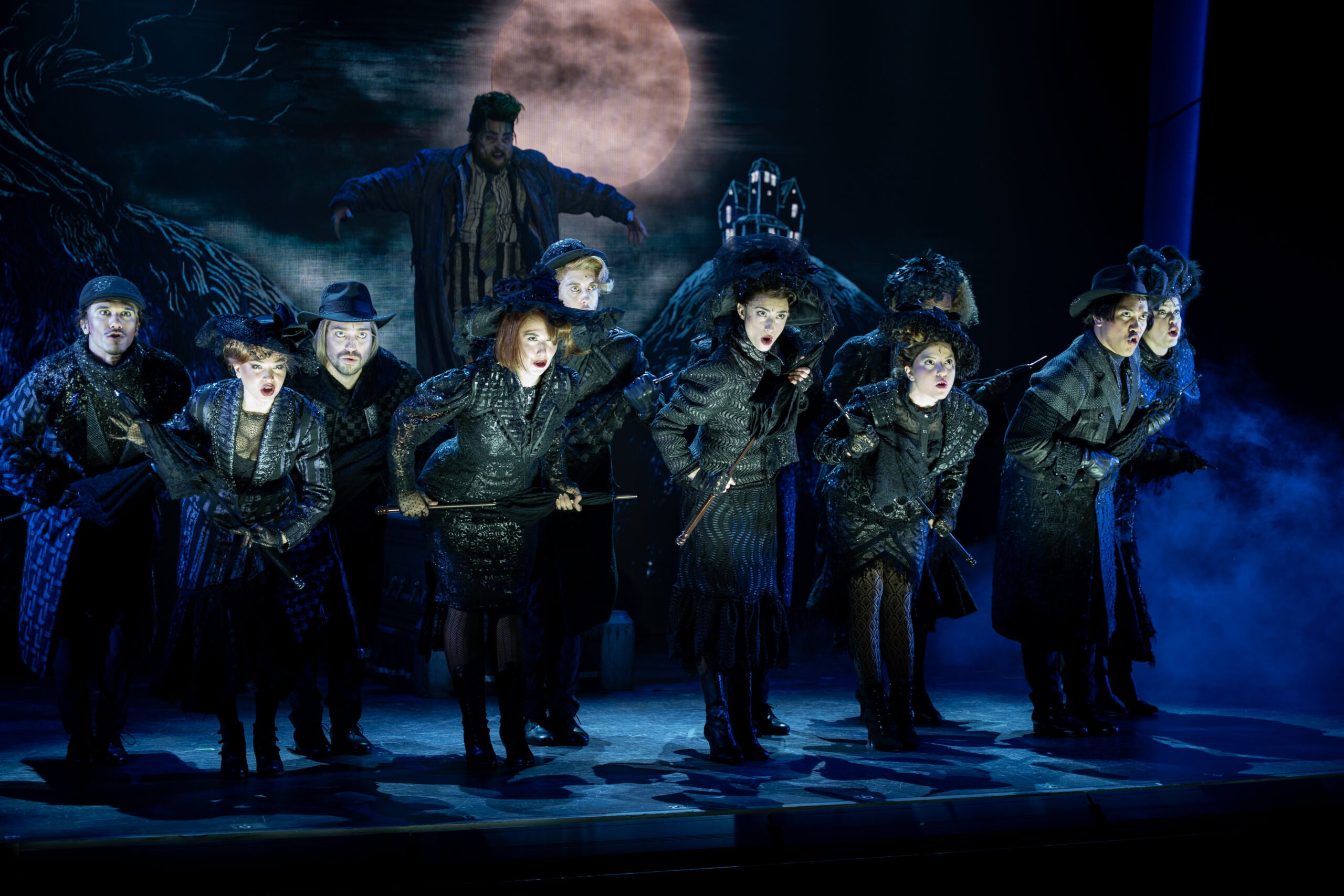
Want to learn more about Hayden’s work, projects, and creative journey?
Visit haydenrivas.com to explore his latest performances, advocacy efforts, and portfolio.
Los Angeles, California
Photography: Leigh Hilary Lee & Evie Wang
Editor-In-Chief: Jamee Beth Livingston
Livingston Publishing



